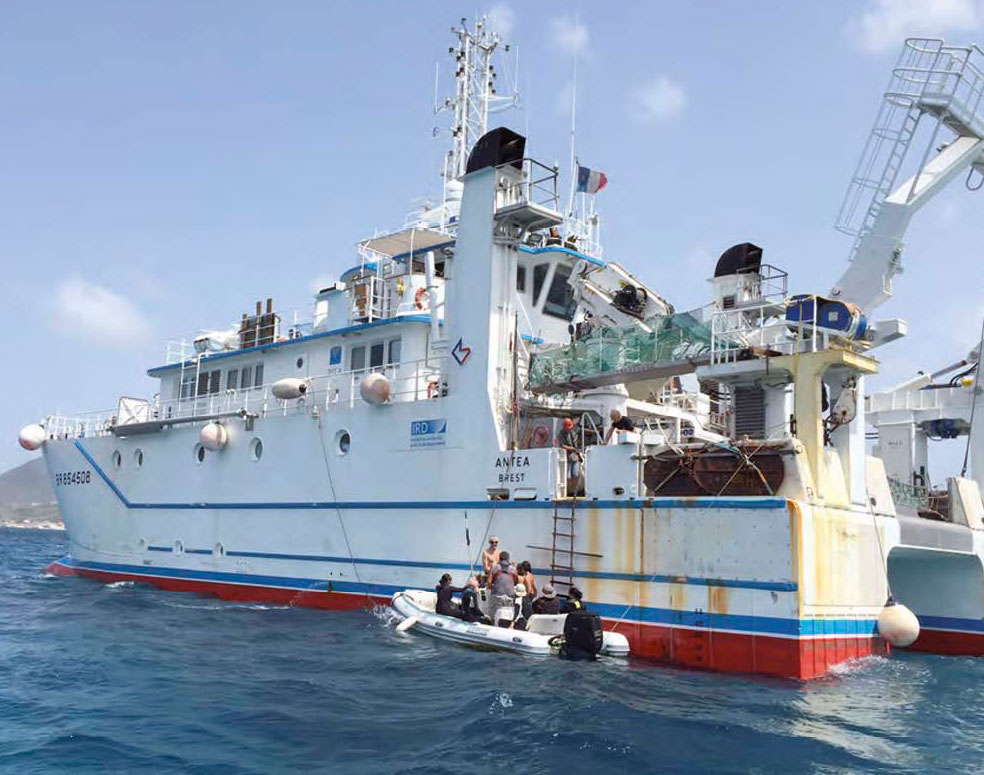From April 22 through June 1, 2015, Pacotilles set out to collect samples of coral, sponges, algae, and small shellfish in Martinique, Guadeloupe, and Saint Martin. The goal of this inventory is to improve our knowledge of biodiversity and the connectivity of benthos -the community of organisms that live on, in, or near the seabed- in the Lesser Antilles. This project was financed by the Institut de recherche pour le développement (IRD), the CNRS, and the Agency for Protected Marine Zones. Normally prohibited by law, the collection of species for this inventory was authorized by the Réserve Naturelle. They responded favorably to a request made by the directors of Pacotilles, who in return will provide a report about the project and its results.
AGOA: a partnership renewed
Good news for marine mammals. After evaluating the work done over the past two years by the Réserve Naturelle, the Agency for Protected Marine Zones (AAMP), agrees to renew the partnership agreement it signed on behalf of the AGOA sanctuary and the Réserve. Pierre Leca, deputy director of AAMP, who runs their natural marine parks department, made the decision. While visiting our region in April 2015, his goal was to meet with all of the administrative agencies and members of the board of AGOA in Guadeloupe, Martinique, Saint Barthélemy, and Saint Martin. Accompanied by François Colas, chef of the Antilles branch of AAMP, and Amandine Aynaudi, representative of AGOA, he met with various people on our island including vice president Ramona Connor at the Collectivité, prefect Philippe Chopin, and deputy Daniel Gibbs. The meeting at the Réserve Naturelle focused on the most recent management board meeting for AGOA, which was held May 21, 2015 in Martinique.

















